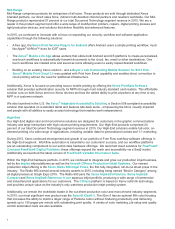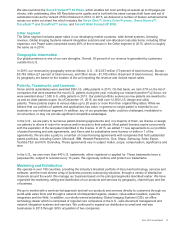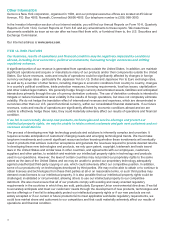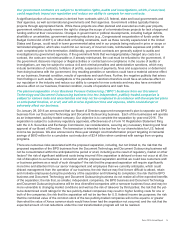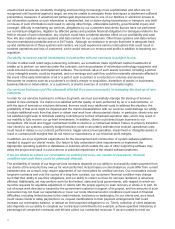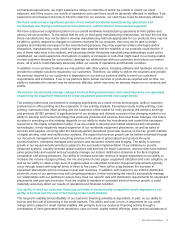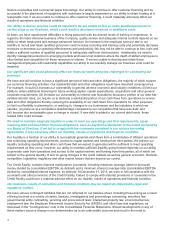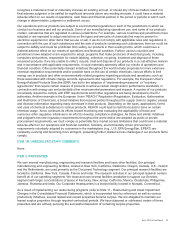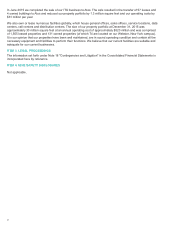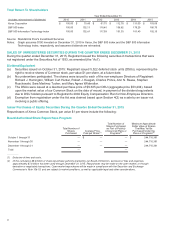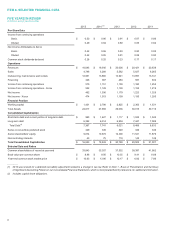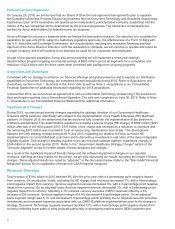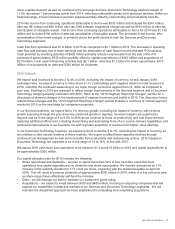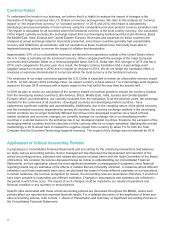Xerox 2015 Annual Report Download - page 36
Download and view the complete annual report
Please find page 36 of the 2015 Xerox annual report below. You can navigate through the pages in the report by either clicking on the pages listed below, or by using the keyword search tool below to find specific information within the annual report.finance receivables and commercial paper borrowings. Our ability to continue to offer customer financing and be
successful in the placement of equipment with customers is largely dependent on our ability to obtain funding at a
reasonable cost. If we are unable to continue to offer customer financing, it could materially adversely affect our
results of operations and financial condition.
Our ability to deliver services could be impaired if we are unable to hire or retain qualified personnel in
certain areas of our business, which could result in decreased revenues or additional costs.
At times, we have experienced difficulties in hiring personnel with the desired levels of training or experience. In
regard to the labor-intensive business of the Company, quality service and adequate internal controls depend on our
ability to retain employees and manage personnel turnover. An increase in the employee turnover rate or our
inability to recruit and retain qualified personnel could increase recruiting and training costs and potentially decrease
revenues or decrease our operating effectiveness and productivity. We may not be able to continue to hire, train and
retain a sufficient number of qualified personnel to adequately staff new client projects. Additionally, we need to
identify managerial personnel in emerging markets and lower-cost locations where the depth of skilled employees is
often limited and competition for these resources is intense. If we are unable to develop and retain these
managerial employees with leadership capabilities our ability to successfully manage our business units could be
impaired.
Our significant debt could adversely affect our financial health and pose challenges for conducting our
business.
We have and will continue to have a significant amount of debt and other obligations, the majority of which support
our customer financing activities. Our substantial debt and other obligations could have important consequences.
For example, it could (i) increase our vulnerability to general adverse economic and industry conditions; (ii) limit our
ability to obtain additional financing for future working capital, capital expenditures, acquisitions and other general
corporate requirements; (iii) increase our vulnerability to interest rate fluctuations because a portion of our debt has
variable interest rates; (iv) require us to dedicate a substantial portion of our cash flows from operations to service
debt and other obligations thereby reducing the availability of our cash flows from operations for other purposes;
(v) limit our flexibility in planning for, or reacting to, changes in our businesses and the industries in which we
operate; (vi) place us at a competitive disadvantage compared to our competitors that have less debt; and
(vii) become due and payable upon a change in control. If new debt is added to our current debt levels, these
related risks could increase.
We need to maintain adequate liquidity in order to meet our operating cash flow requirements, repay
maturing debt and meet other financial obligations, such as payment of dividends to the extent declared by
our Board of Directors. If we fail to comply with the covenants contained in our various borrowing
agreements, it may adversely affect our liquidity, results of operations and financial condition.
Our liquidity is a function of our ability to successfully generate cash flows from a combination of efficient operations
and continuing operating improvements, access to capital markets and funding from third parties. We believe our
liquidity (including operating and other cash flows that we expect to generate) will be sufficient to meet operating
requirements as they occur; however, our ability to maintain sufficient liquidity going forward depends on our ability
to generate cash from operations and access to the capital markets and funding from third parties, all of which are
subject to the general liquidity of and on-going changes in the credit markets as well as general economic, financial,
competitive, legislative, regulatory and other market factors that are beyond our control.
The Credit Facility contains financial maintenance covenants, including maximum leverage (debt for borrowed
money divided by consolidated EBITDA, as defined) and a minimum interest coverage ratio (consolidated EBITDA
divided by consolidated interest expense, as defined). At December 31, 2015, we were in full compliance with the
covenants and other provisions of the Credit Facility. Failure to comply with material provisions or covenants in the
Credit Facility could have a material adverse effect on our liquidity, results of operations and financial condition.
Our business, results of operations and financial condition may be negatively impacted by legal and
regulatory matters.
We have various contingent liabilities that are not reflected on our balance sheet, including those arising as a result
of being involved in a variety of claims, lawsuits, investigations and proceedings concerning: securities law;
governmental entity contracting, servicing and procurement laws; intellectual property law; environmental law;
employment law; the Employee Retirement Income Security Act (ERISA); and other laws and regulations, as
discussed in the “Contingencies” note in the Consolidated Financial Statements. Should developments in any of
these matters cause a change in our determination as to an unfavorable outcome and result in the need to
19


